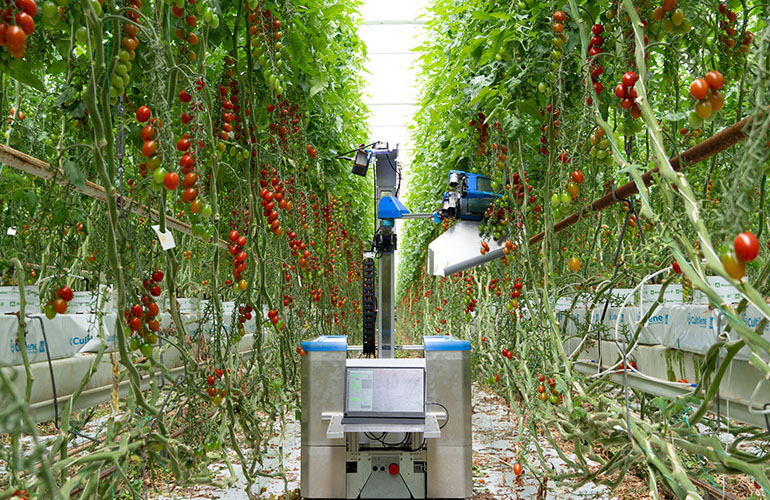|
Listen to this article |
inaho Inc. has been conducting trials in the Netherlands for its cherry tomato harvesting robot. The robot started trials with Dutch growers in May 2023, and its latest trial wrapped up this July.
The Kanagawa, Japan-based company said that from last year to this year, its robot demonstrated a number of improvements in its performance.
Harvesting soft produce such as tomatoes and berries presents a unique challenge for robots. While the repeatable task of picking hundreds of individual tomatoes off a vine may seem ideal for automation, many robots don’t have the delicate touch needed to do it without making a mess.
“We want to expand the scales of our trials to get ready for commercializing our robots, and we are actively looking for some growers with a clear vision for the future,” stated Sohya Ohyama, chief operating officer of inaho.
“The growers can take advantage of becoming familiar with collaborative operations with robots at an early stage,” he added. “We are willing to work together with growers to develop a concrete business model and robot arrangements to maximize the co-performance between humans and the robots.”
Since the successful trials, inaho’s cooperating grower has agreed to pay the fees for the robot’s harvesting performance since November 2023. The Kanagawa, Japan-based company is seeking partners in the form of investors, growers, seed companies, research organizations, and agriculture consulting firms.
In addition to tomatoes, it also offers robots for asparagus harvesting, automated ground vehicles (AGVs), and electric trolleys for use in agriculture.
inaho makes tomato picking improvements
Some of the improvements inaho made to its robot for the 2024 growing season include:
- Improved harvesting speed: Compared with last year, the robot has doubled its harvesting speed in similar conditions. The company said this is thanks to a new chip, a new camera, and improved AI software.
- Fewer mistakes: Improved image recognition has decreased the number of errors associated with dropping tomatoes and picking green ones.
- More practical body: The body of the robot has been slimmed down, helping to avoid damage to the plants and fitting smaller lanes in greenhouses.
“Preparing for higher labor costs and labor shortage is one of our priorities, and cooperation with inaho gives us an opportunity to get used to working with harvesting robots,” said Nick Duijvestijn, owner of grower Kwekerij Duijvestijn BV. “inaho’s robot is easy to operate for the employees, and our tomatoes are harvested safely without any damage to the fruits and plants.”
The Netherlands is the second-largest exporter of agricultural produce in the world, exporting €65 billion ($72 billion U.S.) annually, according to the International Trade Association and the country’s government.
Other harvesting robots go to market
There are currently 2.4 million farm jobs that need to be filled, according to the American Farm Bureau Federation. Harvesting jobs, like the ones inaho aims to automate, can be particularly challenging roles for farm owners to fill.
Typically, harvesting needs to happen in only a few weeks out of the year, so farmers are looking for temporary laborers to work long days.
Ridder is another developer of autonomous tomato-picking robots. The Maasdijk, Netherlands-based company’s GRoW harvester uses dual robotic arms to pick vines of larger tomatoes, not cherry tomatoes like the ones inaho specializes in.
GRoW’s dual arms enable the robot to pick on both sides of the greenhouse row at once for faster harvesting.
Four Growers is a Turtle Creek, Pa.-based robotics developer. Its robots are currently optimized for tomato harvesting, but the company plans to expand its expertise to peppers and cucumbers.
Four Growers said it designed its GR-100 robot to work within the existing parameters of most commercial greenhouses. It’s made up of a robotic arm and four stereo cameras, allowing it to detect and harvest tomatoes with high precision.


